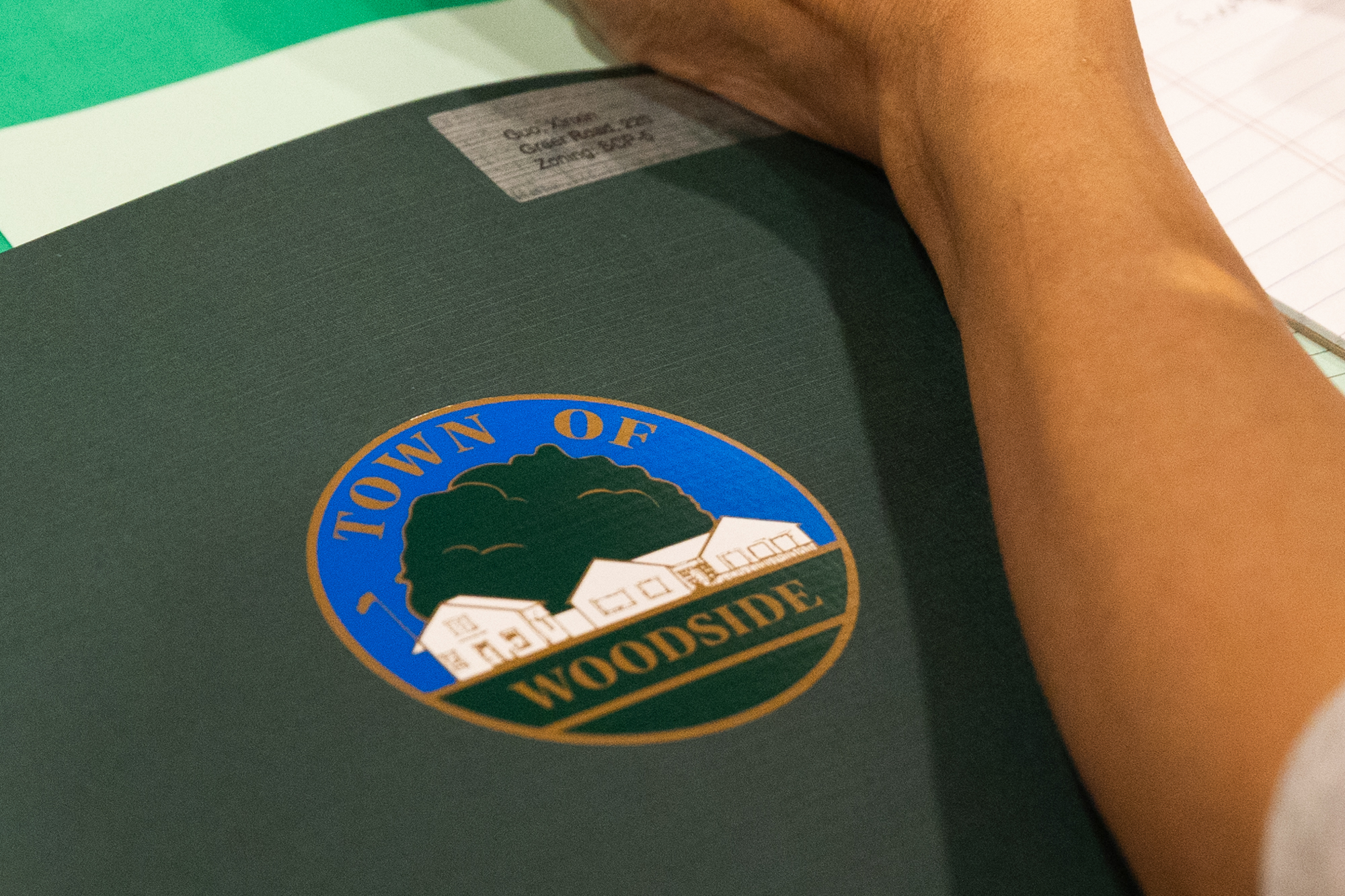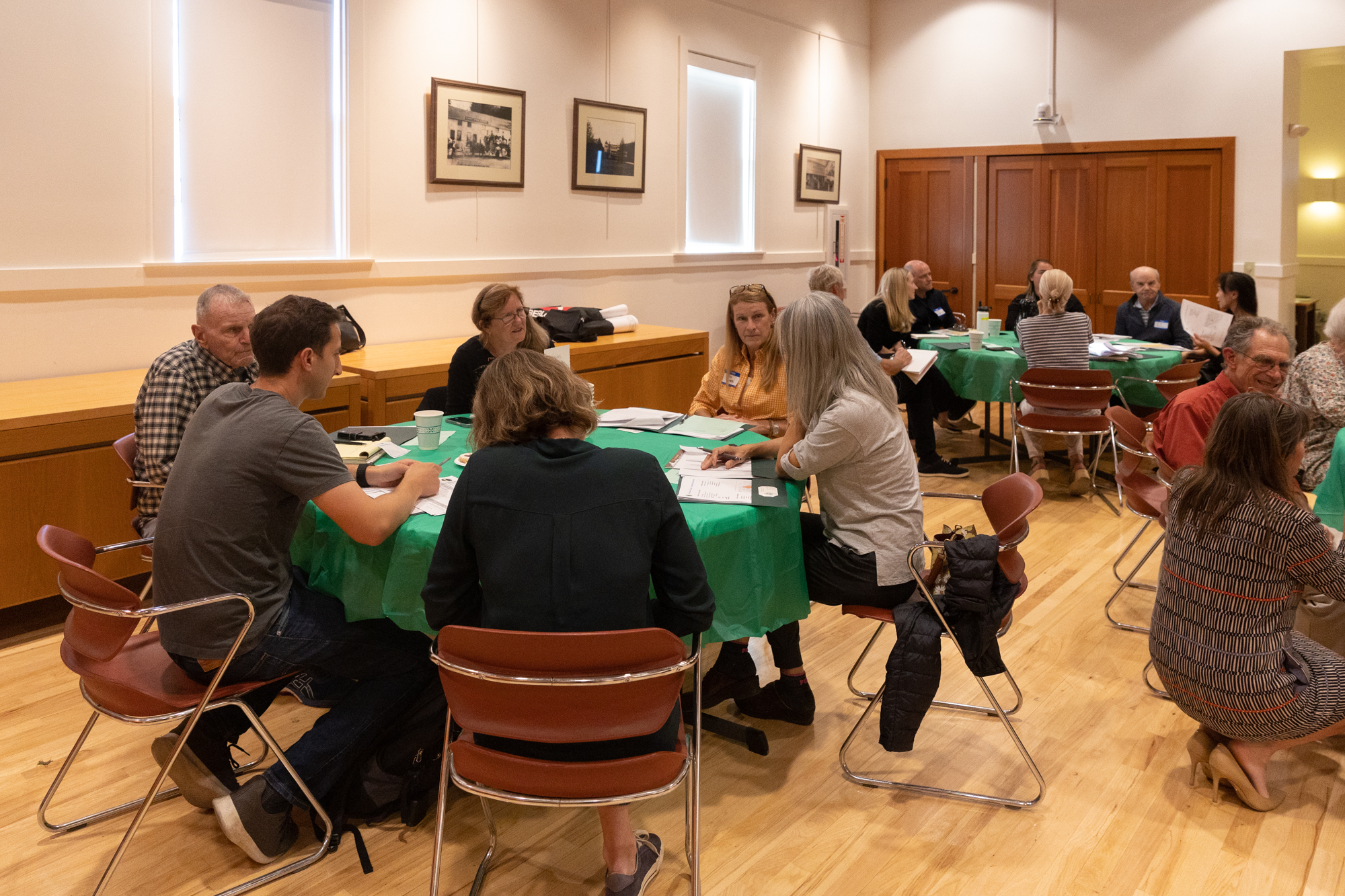Woodside has joined the ranks of other Bay Area cities and towns that have had their housing elements initially rejected by the state, receiving feedback to make changes and resubmit it for approval later this year. It is one of six jurisdictions in San Mateo County that has received response letters rejecting their initial drafts.
In an 18-page letter sent to the town on Friday, Oct. 14, the state Department of Housing and Community Development (HCD) notes areas where Woodside needs to provide more specificity on its housing plans, including about the 80 units of proposed housing at Cañada College.
"The draft element addresses many statutory requirements; however, revisions will be necessary to comply with state law," the letter states. The letter asks for more details and analysis across the entire plan.
Cities and towns that don't adopt a compliant housing element could face legal repercussions and stiff fines, state officials have said.
Along with Woodside, the cities of Foster City, San Mateo, San Bruno, Redwood City and Colma have received feedback on their drafts. Redwood City was the first local city to hear back from the state on its plan in July after submitting its draft in April.
Woodside's plan includes 401 new housing units, which adds a buffer above and beyond the 328 units the town is required to plan for as part of the 2023-31 Regional Housing Needs Allocation. It is a big jump from previous requirement to plan for 62 units during the last eight-year cycle.
The draft was submitted to the state on July 16 and HCD had 90 days to offer feedback. A compliant draft of the housing element has to be approved by the town by Jan. 31, 2023.
In order to meet the January deadline, the town would need to submit a compliant draft by the end of November to give HCD 60 days to review the next draft. The town will need to revise the draft amid major changes to its Planning Department in the next two weeks. Planning Director Jackie Young is retiring on Oct. 31 and the Town Council plans to hire a consultant at its meeting on Tuesday, Oct. 25, to handle revisions to the draft.
Mountain View received a 12-page letter from the state with feedback on its element in late September with more pointed critique of its plans.
Town and housing advocate's response to the letter
Mayor Pro Tem Chris Shaw said in an email that, based on the feedback, "there is a lot to work through in the HCD comment letter ranging from granular minutiae to quite broad comments."
"Putting together the response is going to require a tremendous amount of time and effort," he said. "However, I am confident that the staff and Town Council will produce an appropriate response to HCD."
Mayor Dick Brown noted that the letter asked for a lot of detail, as opposed to simply saying "we don't like this." He acknowledges the changes will take a lot of work.
Bryant said the town expected a long letter asking for a lot of different things, based on what other towns and cities ahead of Woodside in the process have seen.
"They get really down into specific comments; I'm not surprised by it," he said.
Jeremy Levine, a policy manager for the housing advocacy group the Housing Leadership Council, said in the first review, HCD is giving Woodside and jurisdictions the chance to justify their plans. He expects HCD will give more specific feedback once the town provides more analysis.
"The parts they (Woodside) attempted to comply with fell far short of meeting the requirements of the state," he said. "HCD can't critique analysis that the city didn't do. ... This is a letter that basically says Woodside is almost starting from scratch in the housing element. ... This is a problem that many jurisdictions in San Mateo County are facing."
"If Woodside were to act with strong political will to create a plan that was realistic, took real steps to turn city owned property to multifamily housing, and was serious about meeting its housing need, it would be completely possible it could create a good plan and submit it by Jan. 31," he said. "If it continues to pursue a status quo policy, and the town treats it (the housing element) like an opt-in game, Woodside is going to have some trouble. It's trouble of their own making."
He notes that policy advocates such as himself have written letters to the town with specific feedback on how it can improve the plan, but the town hasn't taken much of those recommendations into account.
ADUs
The plan relies heavily on Accessory Dwelling Units (ADUs), with plans for residents to build 180 units by 2031.
HCD says the element must include more analysis, along with policies and programs that incentivize the production of ADUs at the affordability levels assumed in the element.
Depending on the analysis, the element must commit to monitor ADU production and affordability throughout the planning period and implement additional actions if the town fails to meet its target numbers within a specified time period, such as six months, HCD wrote.
More high density zoning needed
To be considered feasible for low-income housing, there needs to be at least 20 units per acre in Woodside, according to the state.
Woodside's draft housing element allocates units for lower income on sites that will be rezoned with densities of up to 10 dwelling units an acre, meaning the element does not currently support those assumptions.
In addition, if rezonings are not completed by Jan. 31, 2023, then the element must include a program to make zoning and development standards available during the planning period.
Cañada College site
The state says the town must clarify if there is an existing development application for the new housing at Cañada College. San Mateo Community College District officials have said publicly that there is no project in the pipeline because it doesn't yet have funds to construct the units.
If there is a pending project, the element must describe the proposed affordability based on proposed sale prices or rents or other mechanisms to ensure affordability such as deed restrictions and demonstrate their availability in the planning period, according to the state. If there is no currently pending application, the element must analyze the feasibility for new residential development and availability of the site during the planning period including affordability assumptions on the large site (over 10 acres) and redevelopment potential, state officials said.
Given that Woodside included the CaÒada site in its last housing cycle, the element must include actions that commit to facilitating development and monitoring approvals, like coordination with the applicant to approve remaining entitlements, supporting funding applications, expediting approvals, and rezoning or identification of additional sites if the applications are not approved, the letter states.
HCD officials say the housing element must indicate whether the development will be restricted to students or open to faculty or available to anyone interested.
Bryant said it's clear the town needs to work with CaÒada to better define the housing plan at the college. He said he's like the town to find a partnership (grants or partnership with an affordable housing nonprofit) that yields them the housing they need for staff.
About adding housing at the school, Brown said "We need it and CaÒada College needs it."
SB 9 sites
The element identifies Senate Bill 9 lot splits as a strategy to accommodate part of the moderate and above-moderate income RHNA. The state wants the town to provide analysis that must include experience, trends and market conditions that allow lot splits.
To address this requirement, the town could survey property owners to gather interest in development in the planning period. The analysis must also address whether the existing use will not constitute an impediment for additional residential development. For example, the analysis should describe whether the use will continue or discontinue; how parcels were selected; account for land use controls such as development standards; potential for parceling if applicable; age and condition of structure.
More details needed on housing needs, resources and constraints
The element must include the town's ability to investigate housing complaints and remedy them or engage in fair housing testing, according to the letter. The element states that outreach consisted of Town Council meetings, webinars and commission meetings, but does not describe efforts to reach out to protected classes about existing fair housing laws and regulations, HCD wrote.
Woodside's element includes some data on integration and segregation at the regional and local level; however, it must include an analysis of patterns over time. The element must also analyze segregation and integration both locally (comparing areas within the town) and regionally (comparing the town to the region), HCD wrote.
The element must include contributing factors to the severity of fair housing issues in town, such as community opposition to affordable housing, housing discrimination, land use and zoning laws, lack of regional cooperation, location and type or lack of affordable housing and lack of public or private investment in areas of opportunity or affordable housing choices, according to the letter.
The state is also asking the town to describe and quantify the results of the prior element's programs and evaluate its effectiveness.
A draft of the housing element can be viewed here. Read the letter from HCD at here.






Comments
Registered user
Woodside: Emerald Hills
on Oct 22, 2022 at 11:42 am
Registered user
on Oct 22, 2022 at 11:42 am
The letter from the state is depressing reading. There are so many requests that it would need a dedicated law firm and statistical analysis department to honestly respond to them all.
I hope Woodside residents are prepared for the "builder's remedy" to kick in after next year's deadline, under which builders can build whatever they want as long as 20% is for low income housing. How would a nice 10 story apartment building look next to Roberts?